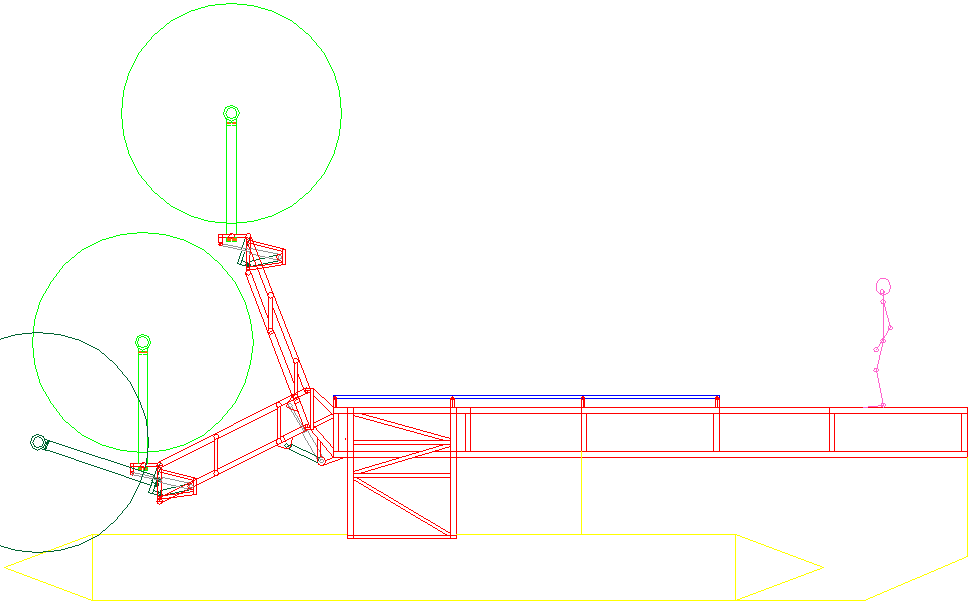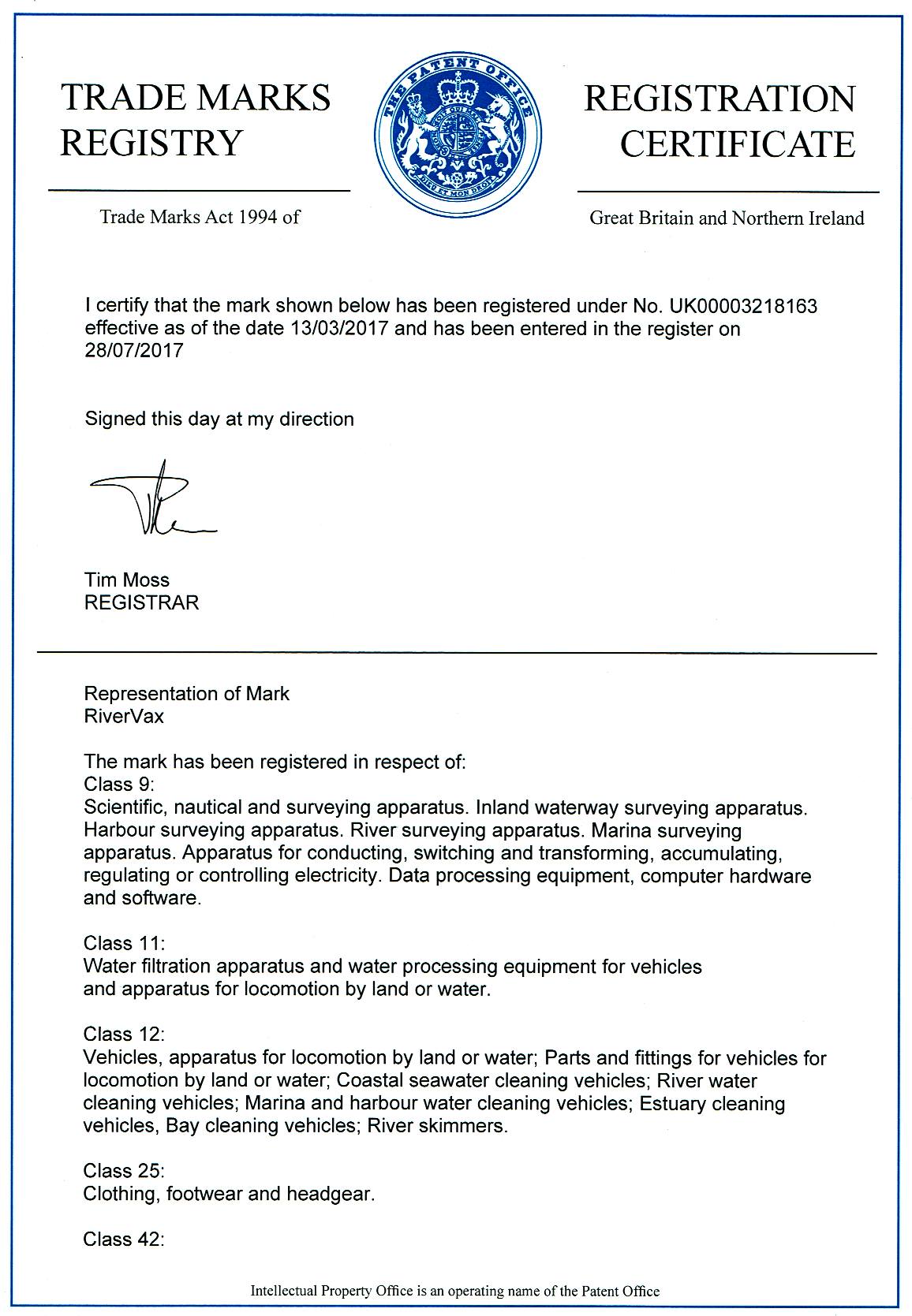|
RIVERVAX ™
ABOUT - CLIMATE - CONTACTS - FOUNDATION - PLASTIC - HOME - A-Z INDEX
RIVER FILTRATION - This vessel is designed to filter river water to prevent waste from land reaching the sea. 45% of plastic litter from land comes from just 10 rivers. Target these for maximum return on recycling. Nine are in Asia, one in Africa. Targeting rivers in Asia would contain and simplify operations - subject to suitable cooperation and rewards from those nations.
WHAT IS RIVERVAX?
RiverVax is a selective water filtration machine that is solar and wind powered and in its final form - able to navigate as a drone - such as to be able to operate at substantially lower cost than the equivalent diesel powered skimming boat where the operators have to pay for fuel and salary a crew.
Unlike SeaVax, the system will require dockside based offloading and transportation if no convenient processor exists. The plastics industry efficiently recycles PET at dedicated plants. We can see no reason that polythene might not attract similar investment.
RiverVax is designed for a smaller carbon footprint than conventional skimmers, potentially helping producers mitigate plastic usage where recycling can be effective and sustainable.
DRAFT COASTAL DESIGN V2 - These diagrams show a single 1.5kW wind turbine mast, an experiment that is planned for 2020 funding dependent. We would like to run a series of tests to determine what format works best in a range of conditions. Ultimately, the vast oceans are the final experiment. It will help us to refine the formula for an international cleaning plan to have data from running coastal trials. Copyright © diagrams 28 March 2019. All rights reserved, Cleaner Ocean Foundation Ltd.
FUNDING HISTORY
The speed of development of any concept depends on the amount of money that is available for such a project. At the present time the UK has no reward system in place to be able to found a business based on waste recycling from rivers. This is despite the fact that the Thames spews 18 tons of plastic a year into the oceans and our shoreline is strewn with litter requiring beach cleaning parties on every stretch several times a year by volunteers.
From 2015 to 2016 the project was sponsored by the directors of Bluebird Marine Systems Ltd with directors loans and other contributions to the tune of £130,000 pounds to kick start the SeaVax concept from which RiverVax came.
From 2016 to 2017 the project progressed with generous crowd funding via Avaaz with significantly more input than the original investment to drive the concept on.
In February 2017 the Cleaner Oceans Foundation applied for H2020 funding asking for around €1.5m euros over three years to produce a quarter scale working prototype of SeaVax - and in May of 2017 the COF took over management of the SeaVax and RiverVax projects.
In June 2017 the European Commission advised that the H2020 application was on a reserved list and that the availability of funds was limited. A major kick in the teeth for marine life.
In 2018 several other international organizations approached offered no financial support, though recognized the potential.
At the time of writing (06-06-19) RiverVax has received no government backing or corporate sponsorship. The Cleaner Ocean Foundation needed to raise around $400k dollars for 2018 to keep up research momentum and run an ocean awareness campaign and test tank experiments. That did not happen, stalling the project where eligibility issues prevented applications for grants. Apparently, not for profits cannot lead bids for innovation funding, hence may not work alone as with other SMEs.
We are willing to undertake research and development contracts from corporations and governments.
Alternatively, the Foundation is looking to pass RiverVax to any concern that is willing to take over development subject to performance clauses.
This can be a 'for profit' business. Any entity interested does not have to be a charity. Negotiations are underway seeking to make recovering river plastic financially attractive to potential investors. If this is not possible, we will at least have planted the seeds.
China no longer accepts plastic waste for processing. There are though recyclers that will take plastic recovered from water for processing.
PLEASE CONTACT US FOR DETAILS
PLEASE HELP US IF YOU CAN
If you or your organization can help us with this important research please get in touch. We would welcome the opportunity to work with those involved in the plastics industry or those who use plastic in their packaging and might like to offset any negatives from their activities with positive research that is likely to offer stability in the future and greater confidence from their customers, suppliers and/or shareholders.
All communications will be treated in strict confidence unless by prior arrangement.
PATENT PENDING - The filtration module, cargo hold and offloading mechanism is shown in red in outline form in the above diagram. The system consists of several integrated components, incorporating motors, pumps, hydraulics, electronics and computer programs - all to be powered by energy from nature - to avoid more greenhouse gas emissions. You can see from the level of integration that such a system would not lend itself to a bolt-on item for existing vessels. Patent protection is being secured where funding as a not for profit may prove impossible to achieve, but where if stakeholders agree to pay for territorial recovery, a business plan may be prepared for venture capital funding. Copyright © diagram Cleaner Ocean Foundation. All rights reserved.
THE DIRTY DOZEN
This list of 40 rivers contains the 12 most polluted rivers in the world, the plastic hot-spots. The top-ten worst rivers are special contenders. We wonder why the United Nations have not started cleanup operations in these locations.
LINKS & REFERENCE
https://marine-conservation.org/what-we-do/program-areas/how-we-fish/destructive-fishing/ https://en.wikipedia.org/wiki/Overfishing https://www.worldwildlife.org/initiatives/international-smart-gear-competition https://www.worldwildlife.org/threats/bycatch
MARINE LIFE - This humpback whale is one example of a magnificent animal that is at the mercy of human activity. Humans are for the most part unaware of the harm their fast-lane lifestyles are causing. We aim to change that by doing all we can to promote ocean literacy.
This website is provided on a free basis as a public information service. Copyright © Cleaner Oceans Foundation Ltd (COFL) (Company No: 4674774) 2019. Solar Studios, BN271RF, United Kingdom. COFL is a charity without share capital. The names Amphimax™, RiverVax™ and SeaVax™ are trademarks.
|




